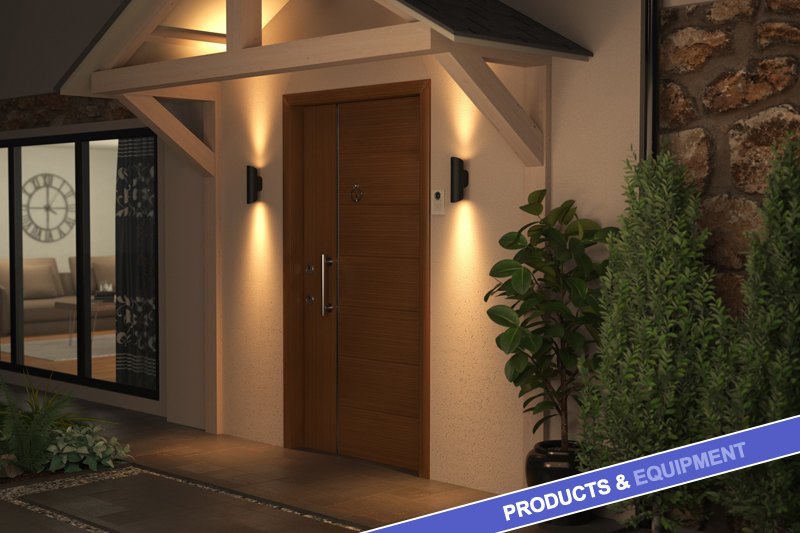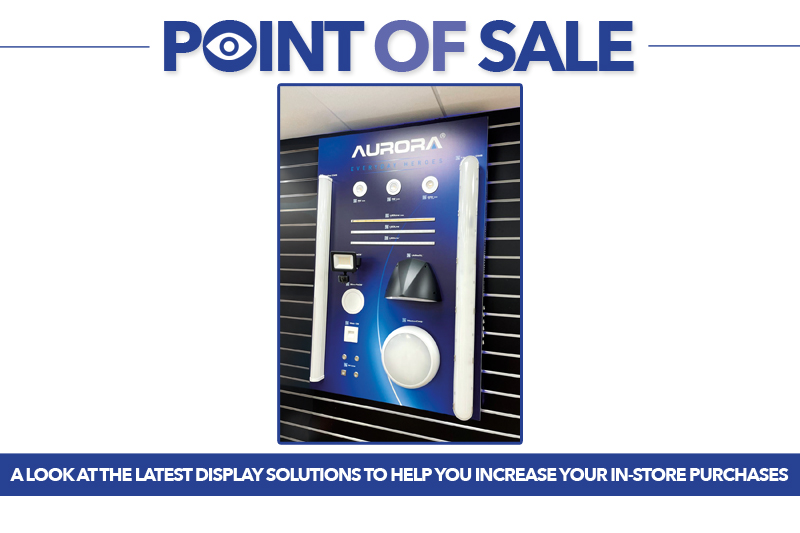There’s a big market for landscape lighting and if you stock the right products and can offer good advice then according to Laura Chadwick, Marketing Director at Collingwood Lighting, you will tap into this lucrative area.
As we move into spring and warmer weather our minds are drawn more to the outdoors and although daylight hours are longer, many homeowners and commercial businesses want lighting solutions to make their outdoor space a bit more special as the light begins to fade.
Many electricians are realising that this is a good opportunity since they can provide both advice and an installed solution. If you can help them secure such projects and stock the right products then there are good opportunities for you to add value to their business.
Thinking about outdoor light
Knowing some basics about landscape lighting will help you both advise an installer and know what products they are likely to need.
You can generally split such lighting schemes into three areas; functional areas, feature areas and entertainment areas.
For functional areas the installer will need to provide the correct lighting for a task. It may be for security, to light storage areas or make sure that a path and steps are properly lit for safety. Feature areas may include the outside of a building, plants, sculptures or even water, they can become a focal point when it grows dark. And entertainment areas need to create ambience.
What to stock?
Different areas will need different lighting solutions. Let’s start with the outside of a building as it’s the first thing that a visitor will see.
Security is essential, so identifying areas that need lighting, perhaps with PIR sensors, is a first step. Beyond that a good external lighting scheme will captivate passers-by and create a positive statement.
The first question to ask the installer is whether they want to light the whole building or just certain areas such as the main doorway, signage or to pick out interesting features.
Uplights are great choice for feature lighting because they are hidden away in daylight hours. Installers can mount them in the ground or on the building using adjustable brackets.
It’s wise to stock options with different power outputs and beam angles to meet different needs. The installer may need high, mid or low power ground lights depending on the size of the building and the feature.
In addition, the contractor will need to avoid unwanted light spillage, glare and light pollution. This means the light will need targeting, so they will need to think about the angle of beam. Again, there are different product options, from a wide beam of 110o for creating a wash of light, 45o for a swath of light across a dedicated area, right down to a 6o beam for closely directed light perhaps for an entrance or specific details that the customer wants to pick out.
Wall lights can also highlight features or illuminate entrances. Again, think about products with different beam angles depending on what the installer wants the light to do.
Outdoor entertaining
Whether you are supplying lighting for someone’s patio or for an outdoor entertainment area for a restaurant or a pub, it’s all about having the right products to create a relaxing ambience.
Think about providing soffit downlights, grounds lights, wall lights or even LED strip lights. The installer or lighting designer may want to complement this with wall or overhead lights and use ground lights to pick out certain features or plants as you would for the outside of a building.
For working areas, perhaps for outdoor cooking, the installer will need to provide a higher light output and will need wall or downlights that they can angle to where the customer needs the light to avoid any unnecessary glare or light spillage.
Garden lighting
Just like lighting the outside of a building, there could be features in a garden that an installer needs to highlight, whether it’s a tree or shrub or perhaps a water feature. Ground lights with different angled beams are a sound choice but it’s also worth considering spike lights. These are easy to move and tilt giving the customer the chance to move and reposition them where they want according to the season or future plans.
Safe passage
It’s vital that people can move safely at night. Whether it’s a path or driveway, good lighting will help them and will also form part of an overall lighting scheme by drawing the eye.
There are a number of lighting products that an installer can use including low glare downlights that won’t dazzle, strip lights or bollards.
Steps are another area that will need good lighting for safety and decoration. Asymmetric lighting or a hood will direct the light downwards where it is needed and avoid glare. An asymmetric beam is also ideal for illuminating wider steps, while decorative mini lights are perfect for narrower flights.
Putting it all together
Working outdoors IP ratings are vital. For general outdoor lighting an installer will need a fitting with at least IP67. If any of the lighting is likely to be submerged, for example ground lights or pond lighting, then make sure that the products are IP68 rated.
For the installation its better for the installer to use low voltage outside so a driver to convert mains to low voltage would be a must. Also think about water proof junction boxes and IP rated connectors.
And to round everything off, no one wants the lights on all night, so lighting control is another addition. It might simply be a timer or PIR sensor on lighting circuits, or for something a bit more special suggest smart lighting control. Security lighting will need different control to the ambient lighting as it’s serving a different purpose.
For the astute contractor outdoor lighting is good business. If as a wholesaler you can help them win such business and be a source of the products that they will need, then you will share in their success now and in the future.
For more information, click here





